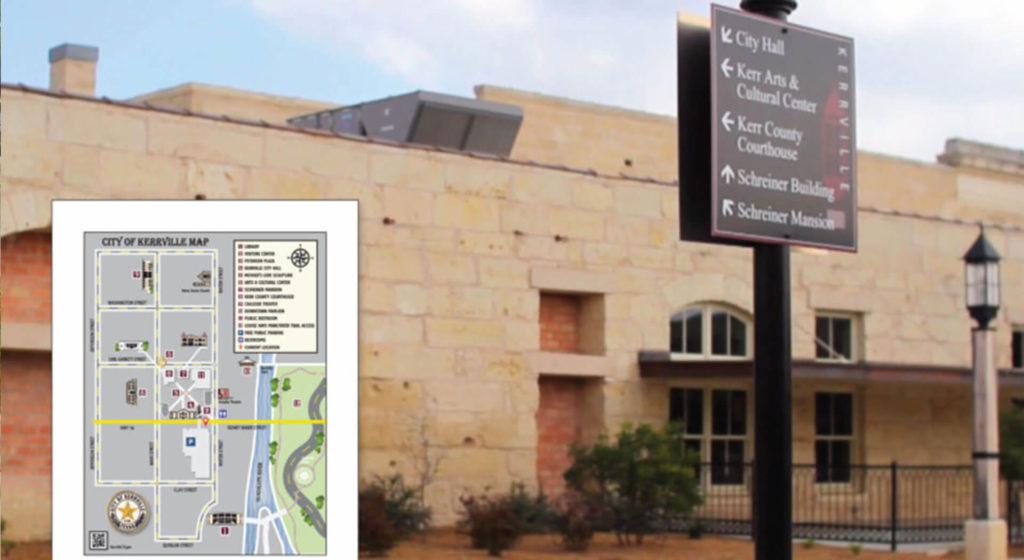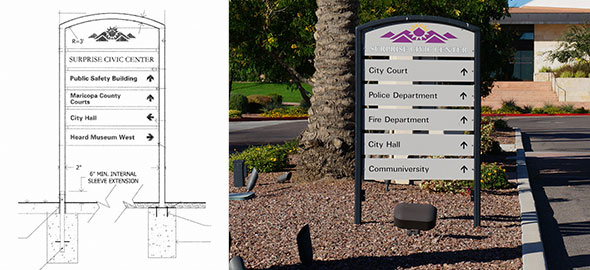Wayfinding RFPs 101: How to Issue Your City’s Wayfinding Request for Proposal
Ah, the dreaded request for proposal process. Love ‘em or hate ‘em, your city’s wayfinding RFP or RFQ is a necessary component of designing and implementing a successful municipal wayfinding and placemaking signage system.
There’s an art to creating a request for proposal that yields the result your municipality seeks. Before you issue your city’s wayfinding RFP and solicit bids, consider the following elements.

Critical Elements of Your City’s Wayfinding RFP.
Project Narrative – Your wayfinding project narrative describes the project’s scope. Document the history and background of the project, the city’s goals for the system, the status of funding, and why wayfinding is a priority today.
Civic Brand Guidelines – Wayfinding is more than sign placement. It’s a brand facilitator that requires the orchestration of typography, color, imagery, form, technology, and content. Your civic brand guidelines should explain who you are and what your city is all about.
Audience Definition – Who interacts with the environment and what are their concerns? If your city has a large student population, walking and cycling paths may be a priority. If the area is a business hub, clear direction to parking may be more important.
System Installation – Does your wayfinding RFQ cover both design and build or design only? A piecemeal approach with multiple vendors can be costly and time consuming. More RFPs. More contracts. More project plans. Plus, the handoff from one vendor to the next often impacts the project timeline due to design flaws, misguided fabrication requirements, and more.
Walkability – Foot traffic has been on the rise for years as younger generations drive demand for increased walkability in their living spaces. Pedestrian signs are a critical component of wayfinding systems in congested environments.
Public Transit – Unlike automobile-oriented systems that prioritize vehicular traffic over other forms of transportation, multimodal transportation systems incorporate walking, cycling, and public transit equally. If this is a priority for your community, include details in your RFP.
Events and Experiences – Parades, arts festivals, holiday celebrations, and sporting events are revenue generators for your local businesses. Include information about special events so that vendors understand the role of events in your placemaking efforts.
Art and Aesthetics – Welcome to Fabulous Las Vegas! Most of us are familiar with this famous landmark. Any modern wayfinding and placemaking system should include compelling visual concepts delivering more artistic and aesthetic appeal than a typical directional sign.
Home Builder Signage – Municipalities invested in wayfinding are often in the midst of residential growth. A strong but fair home builder sign policy allows home builders to attract shoppers to their developments without unattractive and off-brand signage clutter that deters potential new residents.
Why Your City’s Wayfinding RFP Matters.
Civic wayfinding is more than just directional signage. A robust civic wayfinding and placemaking system orients and motivates residents and visitors.
Through strategically-placed and beautifully-designed directional signage, gateways and entrances, public art pieces, pedestrian maps, and technology-enabled mobile experiences, your wayfinding and placemaking system can accelerate economic development by:
- Improving user engagement. Proper signage reduces travel frustrations – getting lost, failing to find parking, etc. – that impact return visits.
- Increasing daily spend. Motivate vehicular traffic to enter your community’s retail areas and disperse to local businesses throughout them.
- Reinforcing your civic brand. Wayfinding and placemaking is about more than navigation. It’s about creating a sense of place in your community.
Are you issuing a civic wayfinding RFP?
We’d love to engage in your city’s wayfinding RFP process. Let’s discuss your wayfinding and placemaking project!
